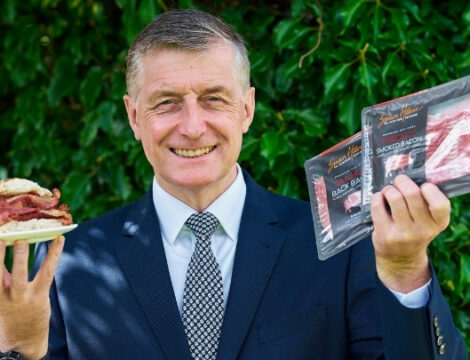Did you know that Perth used to be Scotland’s capital?
The heart of medieval Scotland, it once housed the royal court where parliaments were held and monarchs were crowned.
Key to these coronations was the Stone of Destiny (or Stone of Scone) which was quarried here in Perthshire. Unfortunately, the stone was uprooted from its home many moons ago by King Edward 1st. After being taken to Westminster Abbey, it remained there for hundreds of years. Although now back in Scotland after its move to Edinburgh Castle in 1996, it never returned to Perthshire.
Homeward Bound?
However, proposals for such a move have recently been put forward. Perth and Kinross Council and Culture Perth and Kinross have requested to house the Stone of Destiny in the new City Hall Museum in Perth. Simon is on the board of a committee trying to make the move happen, as he feels it would significantly benefit the region.
“The return of the Stone of Scone would be a significant boost to the Perth area. Particularly as it will be housed in the, soon to be renovated, former city hall as a focal exhibition piece. There will be a learning experience for visitors which tells the story of Scotland through the ages, but with specific reference to the kings and queens who were crowned at both Scone and Westminster Abbey where it lay after King Edward 1st (aka Longshanks) uprooted it from Scone in 1296.”
Signed, Sealed, Delivered
There had been attempts to move it in the past prior to its current residence in Edinburgh. However, these didn’t go too smoothly, as Simon explains:
“Famously in the early hours of Christmas Day 1950 three Glasgow students broke into Westminster Abbey. Using an old coat to drag it over the tiled floor, they removed the Stone. In attempting to lift the Stone out of the Coronation Chair, it fell and a corner was broken off. The students escaped back to Scotland and the Stone remained hidden for several weeks. It was repaired in Glasgow before being deposited on 11 April 1951 at Arbroath Abbey: the signing place of the Declaration of Arbroath in 1320.”
“In the late 1970s there was another attempt by a Glasgow student to take the Stone; it was unsuccessful and little-reported. However, the Abbey’s then Surveyor of the Fabric was sufficiently concerned about how to prove authenticity if the Stone was ever taken. He arranged for a small lead tube containing a triangle of paper, an off-cut from an official authentication document, to be inserted into the side of the Stone and sealed with sealing wax.
“This was discovered during cleaning and conservation work in Edinburgh. The Stone was privately exhibited in the Palace of Holyrood house the evening before St Andrews Day 1996. Once taken to the Great Hall in Edinburgh Castle, the Queen issued the Royal Warrant, thus transferring the Stone into their safekeeping.”
Economic Impact
In Perth, the Stone of Destiny would be free for everyone to see and would be the centrepiece of a brand new £23 million museum at City Hall that is fully accessible. Perth is within 90 minutes’ travel time for over 70% of Scottish residents making it within reach of 3.7 million annual visitors. It is predicted that the project will bring 240-280,000 additional visits to Perth per year by 2024.
Its economic impact is expected to be positive too, with 34 new jobs created at Perth City Hall, plus several construction jobs and apprenticeships. Furthermore, a projected £2.45 million annual value is predicted to be added to the Perth and Kinross economy.
“If we can get it back to Perth we will see it become the iconic centrepiece that draws people to the city. Currently it competes for attention in the aforementioned magnificent Edinburgh Castle. Its ability to rise up the pecking order in our new £23m museum building will therefore be much easier.
“Let’s all get behind this initiative. We need something to bolster Perth City centre and this will be the very thing to do it. It is Scotland’s stone but its rightful home is in Perth. We want it back, we will look after it and ensure that its story is told. We will ensure that it becomes the revered piece of Scottish history it deserves.”
Have Your Say
Keen to get involved? A consultation on the proposal is now live until 19 September 2019, and public opinions are welcomed. More information and details on how to submit your views can be found on the Scottish Government website.









 Explore Articles
Explore Articles
 Click & Collect
Click & Collect













